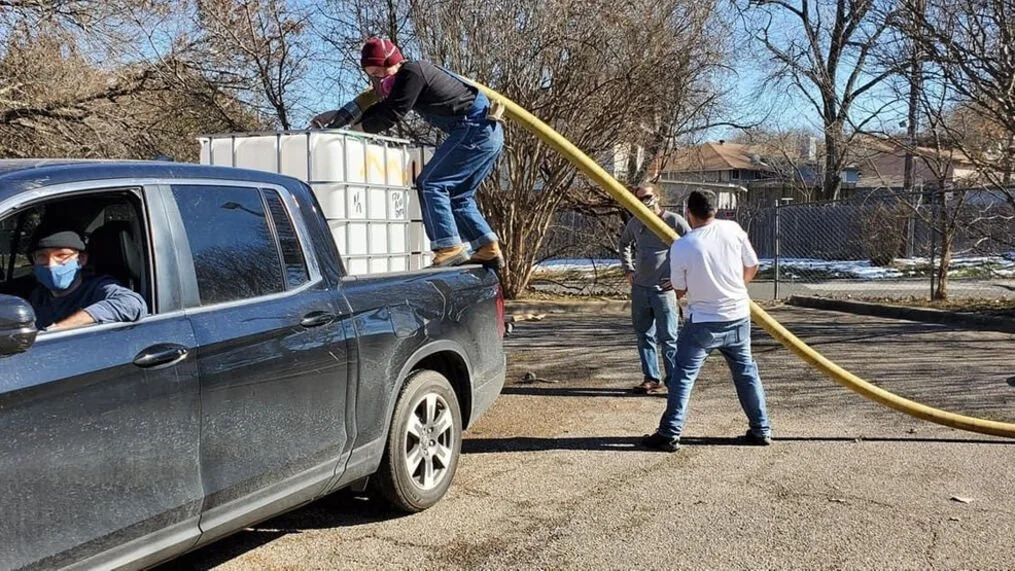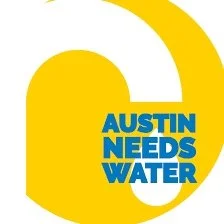Cold Water
Because it was a solid, water no longer came out of our taps, so we became dehydrated, but the main concern was staying warm. Some people had managed to fill bathtubs, some drank the water from their toilet tanks and then filled their toilet tanks with snowmelt or the contents of swimming pools. Ingenuity and whatever we had managed to hoard got us through that first week before things warmed up. Then, water did what it did and came out of broken pipes and had to be shut off. Now we were very thirsty. The emergency was supposed to be over now. The city declared Mission Accomplished when the mains were repaired. To look at headlines, one would have thought we were all about to peel off our stinky clothes and take a bath, but our faucets were still mute. Water mains held water at pressure up and down streets lined by buildings with perforated copper, shut off at the curb. If water ran to these buildings, they would flood and become even less habitable.
The question was, what would happen when enough people got thirsty? Did the city have an emergency water distribution plan? Did the state? Or, at last, would FEMA trucks roll into town, and set up a distribution system?
There were a few points around town where pallets of bottled water were distributed by the EOC, but it tended to be gone fast. It sparked outrage. A network of citizens on facebook started delivering water to friends who didn't, then to other people, and suddenly there was a water distribution organization calling themselves Austin Needs Water (ANW). They fabricated dispensers out of pvc and five gallon buckets which attached to the water cubes set up at distribution points across town.
grassroots water distributionThese were festival people; event planners and organizers in the Burner and Permaculture community. Politically, they tended to be Left, some so far as to identify as Anarchists, some as Communists. They were functioning much as community churches function in a crisis, organizing resources and helping people in need. They were so effective, the city gave them a phone number to report outages and a workspace in the Palmer Events Center. When the National Guard arrived in Austin, they were sent, not to the Emergency Operations Center, but to the ANW offices to help in any way they could.
When the guardsmen arrived, they weren't sure what to do with them. Many distribution points were at low income places, multiplexes where a certain percentage of people lived in fear of deportation and ICE raids. Uniformed guardsmen might scare off those with the greatest need, so it was requested that they wear civilian clothes. The request was denied. These were soldiers. The soldiers could, however, be made to wear pink vests.
Soldiers in pink vests went on delivery runs and manned the phone banks as the effort grew and reached more people. The problem of water distribution finally had a plan and resources, but the volunteers who ran it were exhausted.
Reading this, you might reasonably ask, “Yes, but how MANY people were thirsty?”. Was this the state and community bending over backwards to care for a small, imperiled group of citizens, or was it a massive failure to plan for and respond to a predictable crisis? Or was it something even worse: the inability to detect the crisis?
How long we remained in an emergency depended on plumbing repair. I decided that was where I would try to help, but before I did, I wanted to know how big the problem was and what sort of repair might be needed. I asked everyone I could find: the EOC, The City, water districts, and FEMA. Most did not respond. None of them had an answer.
I was beginning to suspect that The State knew terrifyingly little about what was going on. Why else would they cede the job of planning and implementing water distribution to anarchists? What was the sensory organ for human suffering in our city? It was up to property owners to track and report property damage and the city only “owned” the mains and sewers. It seemed to be no one’s job to know how many people had no water.
Still, Austin Water could, in theory, generate a report that listed residential meters that had shut off and not come back online. A liaison assigned to ANW from the EOC told me that it was “an interesting idea” and would be looked into.
That is as far as I got trying to to understand the big picture, but I knew some people personally who had to have their water shut off at the curb because of burst pipes. A basic repair was probably all they needed to be able to turn it back on, and that would be the difference between being slightly uncomfortable and living in the third world. Just cold water.
This essay series is part of a project to document Texan’s experiences during the 2021 freeze. Do you have a story to share about the 2021 Texas freeze? Share it with my publication, Freeze Stories, on Medium. If its not filled with filth, I’ll publish it. Ok, I’ll publish it even if its filled with filth.

